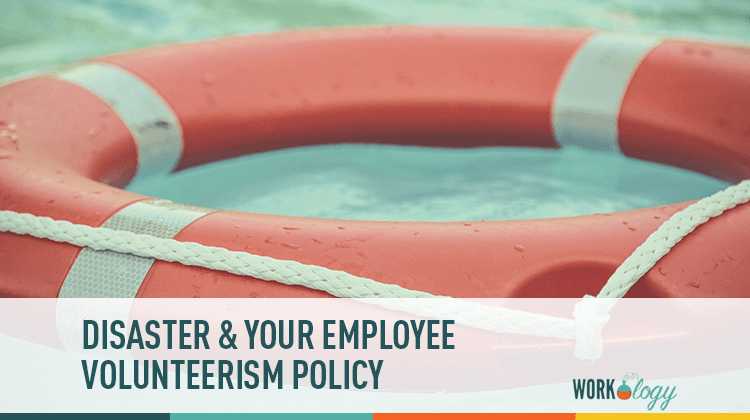In times of disaster, we tend to see the best in human behavior.
On Sunday, May 22, 2011, a massive tornado ripped Joplin, Mo., in half, flattening homes, business, hospitals and lives. More than 100 lost their lives.
Shortly after, emergency personnel, law enforcement and rescue agencies were in place, finding those trapped beneath the destruction, rescuing those who needed help, setting up shelters and doing all they could to keep survivors safe.
Disaster & Your Employee Volunteerism Policy
Along with fire and police, agencies like The Red Cross and The Salvation Army also mobilized units to assist in disaster response. Agencies like these rely heavily on volunteers, and your employees may be among that volunteer force.
As an organization that supports and employs many members of the local community, how do you handle requests for time-off to volunteer? If your employees are passionate about giving their time and effort to a disaster response organization, what are your rules in releasing them to do so? After all, your business may suffer if your work staff disappears for hours, days or weeks to help in the aftermath of a tragedy.
It helps to have some options in place. The upside is that allowing volunteerism during work hours may also help your company. A University of Florida study found companies benefit by allowing their employees to volunteer during work hours occasionally since they come back happier, more productive employees.
There are several ways you can allow for volunteer time-off requests while still protecting productivity in the office. Yes, while volunteerism is certainly laudable and necessary, your company still has to be able to function as well.
Here are some ideas:
Alternative work schedules – allowing the flexibility to approve a variety of work arrangements for employees heavily involved in volunteer work.
Credit work hours – allowing a flexible work schedule in which an employee can work in excess of normal requirements so they can vary the length of a work week. For instance, they can work two extra hours in four days in order to get the normal fifth day off.
Scheduled time off – this includes annual leave, vacation time off, excused absence and leave without pay. Whenever possible, act favorably on requests like this to fulfill volunteer time requests or allow a certain amount of time to use excused absence or leave without pay, i.e. one week every six months.
Compensatory Time – approve requests from employees for time off in exchange for performing an equal amount of overtime work over a set period of time.
What’s your policy? How do you handle requests for volunteer time off?
Heide Brandes is a writer and content creator for Xceptional HR. She has more than 15 years of experience as an award-winning journalist and editor who specializes in human resources, career, and recruiting topics. You can learn more about Heide, our newest contributor at HeideWrites and follow her on Twitter @heidewrite.









One Comment
There is a large company local to me who lets their employees know when they are first hired that they must volunteer 40 hours a year. This is paid time off and the company provides a long list of multiple projects for employees to get involved in. If employees have their own causes, this is fine too. I’ve always loved this and thought every company should do it but I didn’t consider how you schedule that out and the business consequences of employees volunteering during emergencies. These are great suggestions.
Comments are closed.